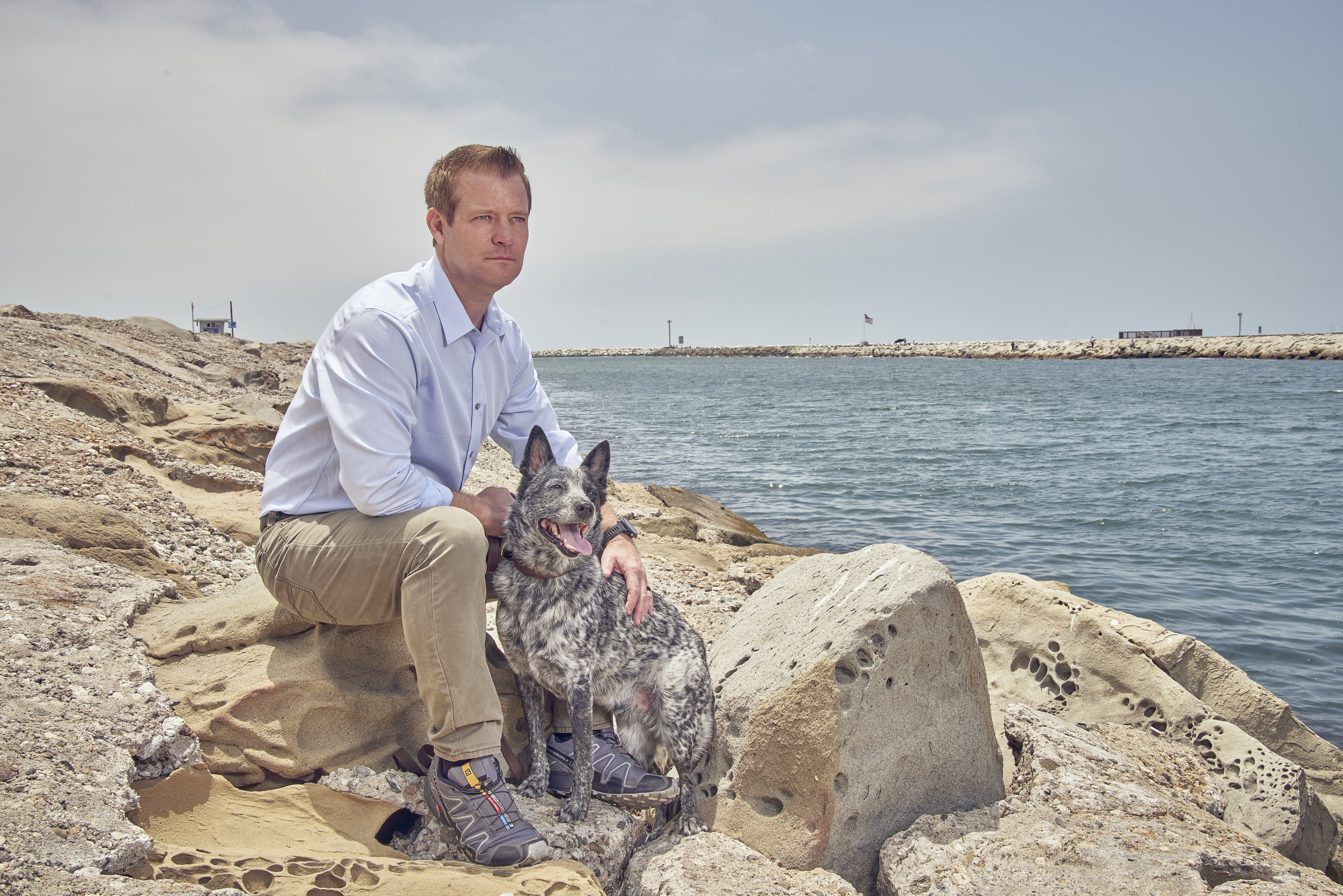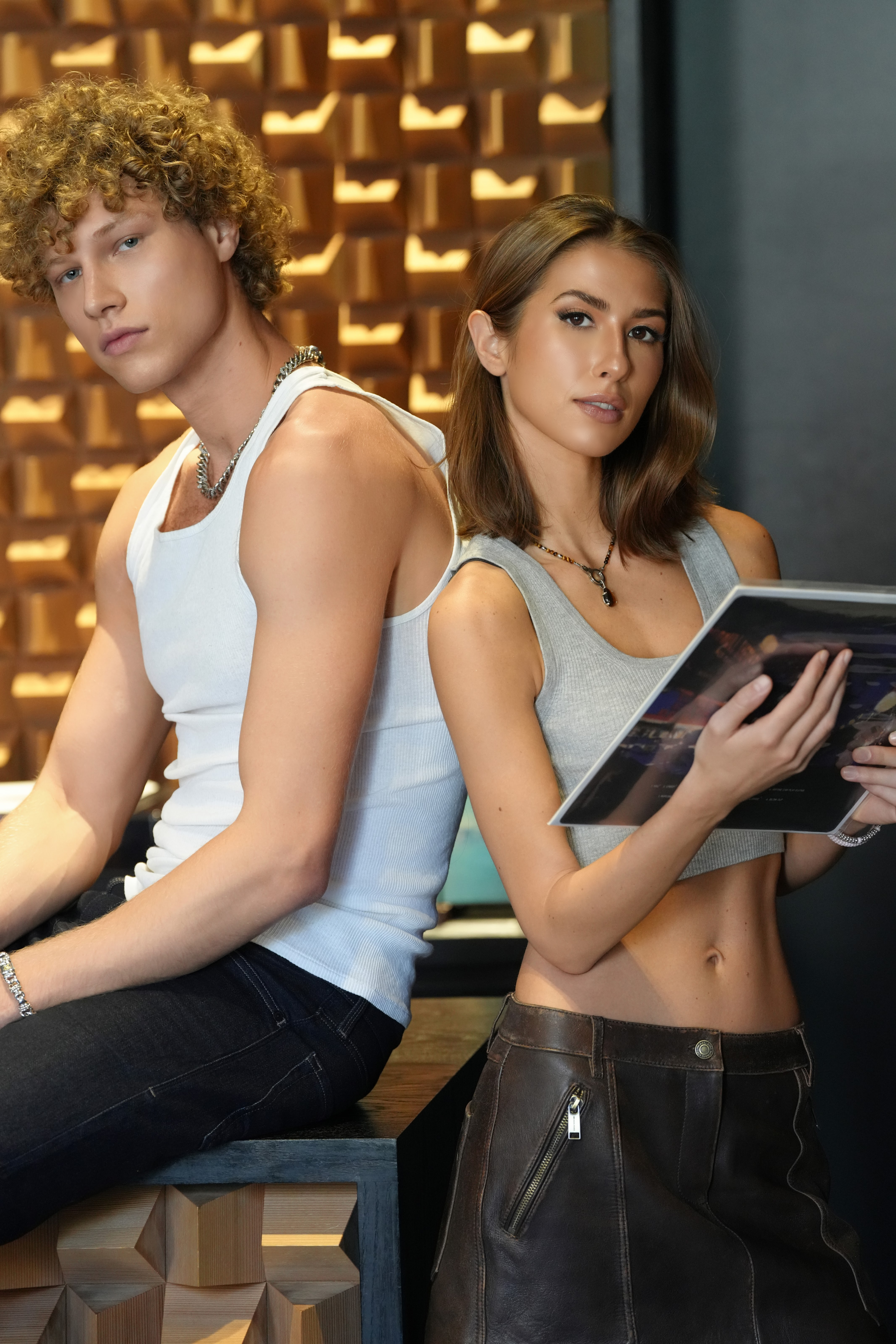We had the pleasure and honor to catch up with Jeff Franklin, who is regarded as one of the world's leading dog trainers, not only for pet dogs (he's trained over 10,000 pet dogs), but who is also responsible for overseeing the selection and instruction of elite canines assigned to the U.S. Military. As a canine expert, Jeff has trained thousands of dogs of nearly all breeds, including pets for civilian life and is responsible for training, certifying, and ensuring that police and military dogs are ready to deploy in today's operations.
Jeff Franklin's unbelievable career is profiled in the new book Franklin: The Man Behind the United States Commando Dogs, which chronicles his story of building the first-of-its-kind dog program for a "top tier" Task Force within the preeminent branch of the United States Military. Jeff's dog-training skills are repeatedly put to the test as he single-handedly turns men and dogs into the world's most formidable K-9 combat teams. With no template to guide him, Jeff creates the canine selection criteria and the necessary training protocol to meet the high-octane demands of the covert Task Force. Through Jeff's story you will follow "operators" and their canine warriors on fiercely dangerous, secretive missions deep inside Middle Eastern battlegrounds. With his larger-than-life ambition, Jeff also finds himself in the hostile jungles of South America furnishing trained dogs to a national police force in the war against a powerful South American terrorist organization.
ATHLEISURE MAG: We love your book, please share your background with our audience and friends!
JEFF FRANKLIN: My background shows I have a different way to go about things. So I started out as a teenager with a crazy passion for working dogs after I met a couple of dogs that a school teacher had, who was a retired canine officer. He brought the dogs to school and I thought they were the coolest things ever and harassed my parents forever before I finally got my first dog, named Lady. I attempted to try to train her to do everything a dog can do. Then I started training other family and friends’ dogs in the neighborhood and started making a little money from it and didn’t have to mow lawns and rake leaves. Eventually I went off to be a Marine and after that I needed a job, and started training dogs again. To be really good at dog training, I felt I had to be able to handle a police dog. Before I was basically training them for a pet dog or sports dog, or explosives and narcotics. I got to be a SWAT cop in Louisville, Kentucky, and harassed my Lieutenant long enough to let me have a dog on our SWAT team, because typically police departments have SWAT or canine, but they typically don’t work together. Moving forward a few years, unfortunately the 911 event changed all of our lives, and the Military Special Ops groups were looking for a dog to help on missions, and a friend in the Secret Service recommended me as one of few people that could do SWAT as an operator and work a dog. I ended up moving as temporary and have been doing ever since 2003 as the government liked what I was doing. The funny part is – I didn’t formally learn to train for this, I did tanks not dogs in the Military, but after 28 or so years, most of it is going out there and doing it.
AM: How did you become responsible for leading the way to train elite dogs for the US Special Forces?
JF: I was the first special forces dog trainer for the US Military. When they found me, I was teaching a course, and they showed up. I was a Marine and didn’t know much about it. It was intriguing to me and was invited for a six month contract to help start a program – and found out I was starting from scratch, including showing how to pick a dog, housing, vet care, PT conditioning, getting on helicopters, explosives and finding bad guys. And doing overseas was a whole new step. It took us a couple years to figure the best way to develop the commando dog program.
One story, not a success, there was a particular dog and he was one of the best dogs I’d think you can find on the planet with his training and he had a great handler. They deployed and did some good work, then on a mission the dog failed at a pretty simple task, no one died, but some people were injured and took rounds because the dog failed at his job. For me, I can’t stand failure, I’m extremely competitive, it was like losing the World Series, but with peoples' lives on the line. I flew there, the dog was going to get fired anyway. We did some re-training, the dog just didn’t care if someone was playing dead, the dog just looked at it from a different perspective as not a threat. So the life-changing part with me, was figuring out a way picking out dogs that won’t fail. I don’t have to be a great dog trainer anymore, I will pick the best dogs for the job against anyone. So it has benefited us immensely moving forward, even though not glorified, it taught me a lot, which has helped a lot of people along the way.
I’ve been training professionally for 28 years, since 18-19 years old beginning to make money at it and the military side since 2003, with my time with the special forces, and small groups other than the working dogs. Our US Military has thousands of dogs in each branch, Special Forces have their groups as well.
AM: Tell us about your company Cobra Canine, what is it and what kinds of services do you provide?
JF: It is a training business for pretty much everything, typically the house pet thing, which is how I started in dogs. We also run several explosive programs for the government, sometimes with TSA, Homeland Security and other groups. For about 20 years, we’ve provided police dogs and police dog training for agencies all over the country. In the last ten years, I’ve done a lot of speaking engagements. Two weekends ago, I was doing a seminar in Costa Rica for protection and narcotics. Sometimes, it’s police, military and other avid people. I have trained trained some for handicapped groups and donate some dogs to help. We’ve worked with the Warrior Dog Foundation and Spikes Canine Fund.
AM: A lot of our readers love dogs of all shapes and sizes. What are some tips you can share to pick out a dog? Are different dogs generally good for different types of people and environments?
JF: I like to be active and stay in shape and my dog is a Belgian Malinois and has been active all my life like me. She’ll be 10 years old in November, and we just ran 8 miles together on Saturday morning. She looks and acts like a 5 year old dog - if I’m hiking and camping, she’s doing it with me.
One of my biggest teaching topics - it can be for a family, police department or special forces unit - you have to pick the right dog for the job. If you don’t, it isn’t going to turn out the way you want. If you’re an avid hiker, it will be hot or cold and not always comfortable, so picking a Whippet is choosing a dog who isn’t going to not do the job. There is a purpose for it, put it in a house or condo with less activity. Out in the woods or mountains, pick a heartier breed which will do that naturally. German Shepherds can do the elements as good or better than humans, but also look at its personality. If by 8 weeks it has a lot of energy, it probably will for rest of its life. For me that’s fine, I generally like dogs that will do wild and crazy, I use them for training and like dogs that do things on their own. Other bashful dogs hanging back in the corner, probably will be unhappy in those situations. You look at the size of the dog, the hair, the personality of the dog, and since normally people are going out picking dogs for a particular lifestyle, we have the choice to at least get close to the right size and personality of what it’s going to do for the rest of its life.
In Costa Rica or Guatemala, everyone is using or wants to use Belgium Malinois because that’s what’s used in the US Special Forces, but that’s not what’s needed in a family. I’m not saying they are vicious, they are active and strong, so don’t get one because it’s a fad or cool. Do your homework and if getting a puppy, know who and how the breeding is done. I don’t recommend pet stores to anyone, they don’t have mom and dad, so they’re likely from puppy mills and don’t know where they came from. Also I look at what their genetics and personalities are, pretty much all puppies at 8 weeks are playing, but when they’re mature, that’s when they can act like mom and dad. It is very important to know about mom and dad, looking at a breeders website can be fluffed and they can say various things, so it is best to go meet them in person and see they actually like breeding and that breed of dogs and doing it well and for the right reason. The internet cycle hasn’t been great for people, you can start there and talk on the phone, but you want to see the operation in person.
The Whippet is a medium sized dog, healthy and loving and with high trainability and good for a city living. I like Beagles a lot, smaller dogs are not for everyone. It is hard to beat a Labrador Retriever, it is up at the top as most registered each year. They are very versatile and go with the flow being adventurous as well as with beautiful hair heritage. Goldens will have a lot of hair. The German Short Hair Pointer is a favorite for outside, they are very sweet and loving dogs that love hikes and can hang out in the house as not active all of the time. German Shepherds are one of the best all around breeds ever and most versatile to date, but there are just as many poorly bred as bred the right way.
AM: OK, so we see this a lot. You have a dog and the family is bringing home a baby from the hospital, what do you do? Also what about having an infant and wanting to get a puppy?
JF: I have a very highly trained protection dog who is social and nice, that also does her work. I also have a two year old and brought home a baby, and the lesson isn’t about if the dog is tough in the work. The dogs that don’t do well with kids are not whether they are or not bite-trained, it is about the ones that aren’t stable, the ones that are nervous or skittish. Babies and toddlers step and pull dogs, drop things and make strange noises, so if you have a nervous dog, you just shouldn’t leave them alone together. You may pay attention to something else, so don’t take the risk with nervous dogs or even bad-ass dogs. If have a loving dog, with the best personality, you know they will be cool and you can generally walk off without thinking about it.
If you have a baby and want to bring home a dog – think about it. If you have a newborn, you probably don’t need puppies to add to the mix. What they do in the first six months is basically how they are, so if already taking care of a child, that is a lot of work. I know a couple that had twins and went and got two puppies and don’t know how they did it. If you have to, then pick a breed that is size appropriate then and long-term and one that is the most stable. Dogs that are biting kids most of the time are reacting because they are scared rather than aggressive, there are rare stories otherwise. So the reactive, nervous dogs are off the general list, but especially around kids.
AM: There are so many different food choices out there for owners to consider? What’s the real deal on what to get and what to stay away from as just an expensive marketing trap?
JF: Today, dogs have been humanized to a fault. There is every type of food on the market, a lot is marketing. Do we really need organic dog food that costs $200 a bag, probably won’t get them to live longer and healthier. We don’t need to pay $10 with horrible ingredients either. First, the dog has to like it. Also, look to see if they look good and if they are fit, have a shinny coat and good weight and muscle tone. Different dogs require different foods, find a quality food and stay away from cheaper food. Peas and carrots sound unrealistic for a dog, they wouldn’t look for that. What is grain-free? I have a great relationship with Royal Canin, they have different foods for different needs and think they do the best job. At one time, we were doing several hundred police dogs a year. You don’t want to see ground yellow corn, that’s often a first ingredient of cheap food. Seeing a quality protein first, like chicken, turkey, salmon, or beef is good and you also want to see the least amount of ingredients as better off. If three ingredients is all it takes, that’s doing good. Another factor to consider, is the dog a 1 year or 5 or 12 year old, as needs and sensitivities change. It is good to take a quality dog food that the dog likes and can see them doing well with it, then look at if a lot is going in and going out with the bathroom, either it isn’t a good food or not working with the dog.
FB @CobraCanine
Read more from the Oct Issue of Athleisure Mag and see Right Dog for the Job with Jeff Franklin.














